Bitcoin Breaks Barriers: Surges Past $67,000, Records Highest Daily Gain in Months

In a display of continued dominance, Bitcoin (BTC) shattered another price barrier on April 23rd, 2024, surpassing the $67,000 USDT mark. This significant surge translates to a 3.4% increase within the last 24 hours, marking the highest daily gain for Bitcoin since early February. The recent price rally has instilled a renewed sense of optimism within the cryptocurrency market, with analysts speculating on whether this is the beginning of another historic bull run.
This surge comes on the heels of the much-anticipated Bitcoin halving event that occurred in march. the halving, which cuts the number of new Bitcoins generated in half every four years, is a fundamental part of Bitcoin’s economic model and is believed to contribute to price appreciation in the long run.
Experts attribute the recent uptick to several factors. Firstly, there’s a growing institutional adoption of cryptocurrency, with major investment firms like BlackRock acknowledging the potential of digital assets. this increased institutional interest signifies a legitimization of the cryptocurrency market and injects a significant amount of capital, pushing prices upwards.
Secondly, the ongoing geopolitical tensions and the resulting economic uncertainty are driving investors towards safe-haven assets like Bitcoin. Bitcoin’s limited supply and decentralized nature make it an attractive option for those seeking to hedge against inflation and potential economic turmoil.
Furthermore, positive regulatory developments around the world are fostering a more favorable environment for cryptocurrencies. Countries like El Salvador’s adoption of Bitcoin as legal tender and regulatory clarity provided by nations like Singapore are boosting investor confidence.
However, amidst the celebratory mood, some analysts advise caution. The cryptocurrency market remains inherently volatile, and past performance is not necessarily indicative of future results. Experts warn that short-term corrections are always a possibility, and investors should exercise prudence when making investment decisions.
Looking ahead, analysts are divided on the next move for Bitcoin. Some predict a continuation of the upward trend, potentially reaching the much-anticipated $75,000 mark in the coming months. Others believe a period of consolidation is likely before another significant price increase. regardless of the short-term trajectory, one thing remains clear: Bitcoin’s recent surge signifies its continued relevance and dominance within the ever-evolving financial landscape.
“Buy Bitcoin” Meme Master Auctions Historic Sign, Marking a New Chapter?
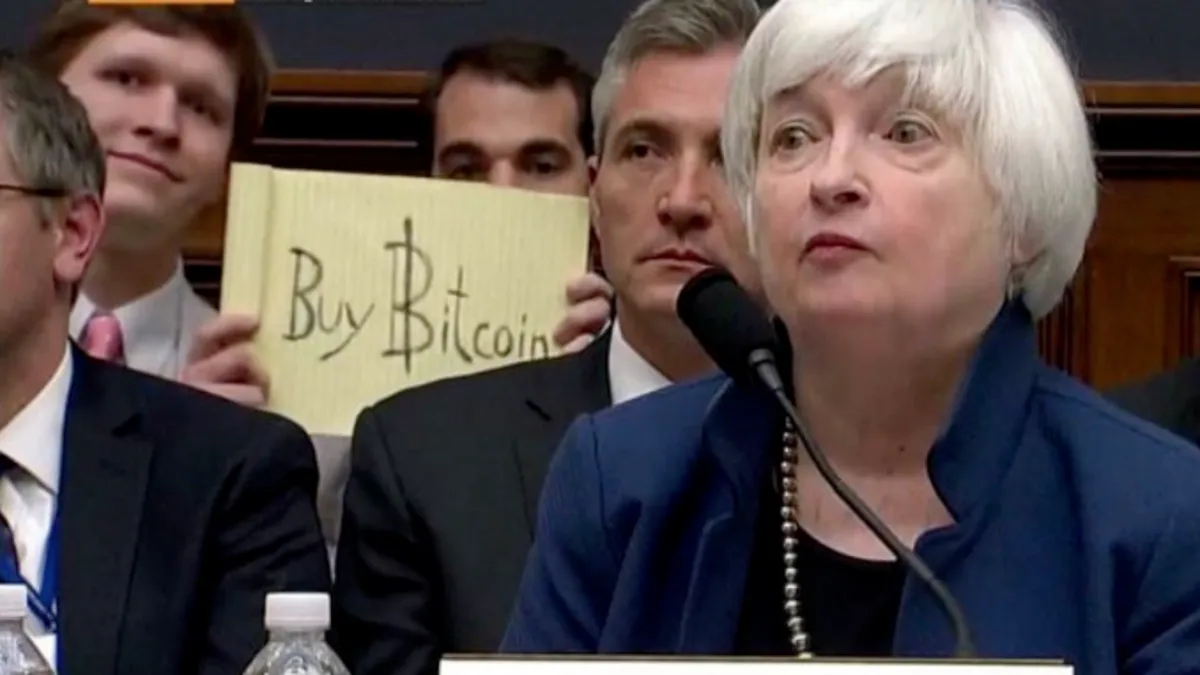
Christian Langalis, the man immortalized in the “Buy Bitcoin” meme, is auctioning the very sign he held aloft during a 2017 Congressional hearing featuring then-Federal Reserve Chair Janet Yellen. This move has sparked a wave of nostalgia and raised questions about Langalis’s own perspective on the future of cryptocurrency.
The now-iconic image captured Langalis interrupting Yellen’s testimony with a simple yellow legal pad scrawled with the words “Buy Bitcoin.” It instantly became a viral sensation, a symbol of both burgeoning crypto enthusiasm and the disruptive potential of the technology.
The auction, set to begin on April 18th on the platform Scarce City, marks a turning point for the meme. The sign itself transcends a simple piece of cardboard – it’s a tangible artifact of a specific moment in crypto history. Bidding will be accepted only in Bitcoin, further solidifying the sign’s connection to the very asset it championed.
Langalis himself remains tight-lipped on his motivations for the auction. In an interview with CoinDesk, he revealed plans to use the proceeds to fund his startup, Tirrel Corp, which focuses on building solutions for Bitcoin’s Lightning Network. This suggests a continued commitment to the technology, but some interpret the auction as a potential shift in focus.
“It’s definitely the end of an era,” said Maya Rose, a crypto historian. “The meme captured the excitement of 2017, but the market’s a different beast now. Maybe Langalis is looking to capitalize on a piece of history and move on to the next big thing within crypto.”
Whether the auction signifies a farewell or a strategic pivot remains to be seen. Regardless, it’s a significant moment for the cryptocurrency community. The “Buy Bitcoin” sign has become a cultural touchstone, and its sale promises to garner significant interest from collectors and crypto enthusiasts alike. The final price could become another benchmark in the ever-evolving story of Bitcoin itself.
Bitcoin: Holding Tight or Movement Muted? On-Chain Activity Lags Behind Price Rally

Bitcoin has once again defied expectations and reached a record high above $70,000. However, a curious disconnect is emerging – on-chain activity, a key metric reflecting usage on the Bitcoin blockchain, tells a different story. Analysts are scratching their heads and wondering whether this is a sign of a bullish hold or a sluggish market.
Data from leading blockchain analytics firm Glassnode paints a contrasting picture. While the price is rising, the dollar value of Bitcoin transferred on the chain is significantly lower than at the peak of the 2021 bull market. Another major analyst group, Blockware Solutions, highlighted this in their recent newsletter, stating that “average on-chain transfer volume is well below the 2021 bull market peak. Hardly any value is being transferred on-chain.” Used to be.”
This reduces the frequency of large transactions, indicating a reluctance among holders to sell at current prices. Data from Glassnode reflects this sentiment – the seven-day and 14-day average transfer volume is currently below $200,000, a far cry from the $1 million-plus levels seen in 2021.
So, what does this mean for the future trajectory of Bitcoin? Interpretations vary. Some analysts see this as a sign of strong holding sentiment. Investors, perhaps encouraged by the recent price increase, are choosing to hold onto their Bitcoin in anticipation of further gains. This could lead to a positive feedback loop, pushing prices even higher as demand remains strong.
However, others caution against blind optimism. Low on-chain activity may also indicate a lack of new money entering the market. Without fresh inflows, the current price rally may lack the momentum needed to sustain itself over the long term. Additionally, stagnant on-chain activity may indicate a decline in Bitcoin’s usefulness as a medium of exchange. After all, if the coins are not being actively transacted, it calls into question the adoption of Bitcoin as a mainstream currency.
The coming weeks will be important in understanding this mystery. If on-chain activity increases along with the rising price, it could strengthen the existing bullish trend. However, if the disconnect continues, it could also signal a period of consolidation or a potential correction.
One thing is clear – the current situation presents an interesting puzzle for Bitcoin observers. The decoupling of price and on-chain activity is a unique development in Bitcoin’s history, and its implications for the future remain to be seen. Only time will tell if this is a pause before moving forward or a sign of a different story unfolding.
BlackRock Goes on Bitcoin Buying Spree: IBIT Inhales $778 Million Amidst Market Selloff
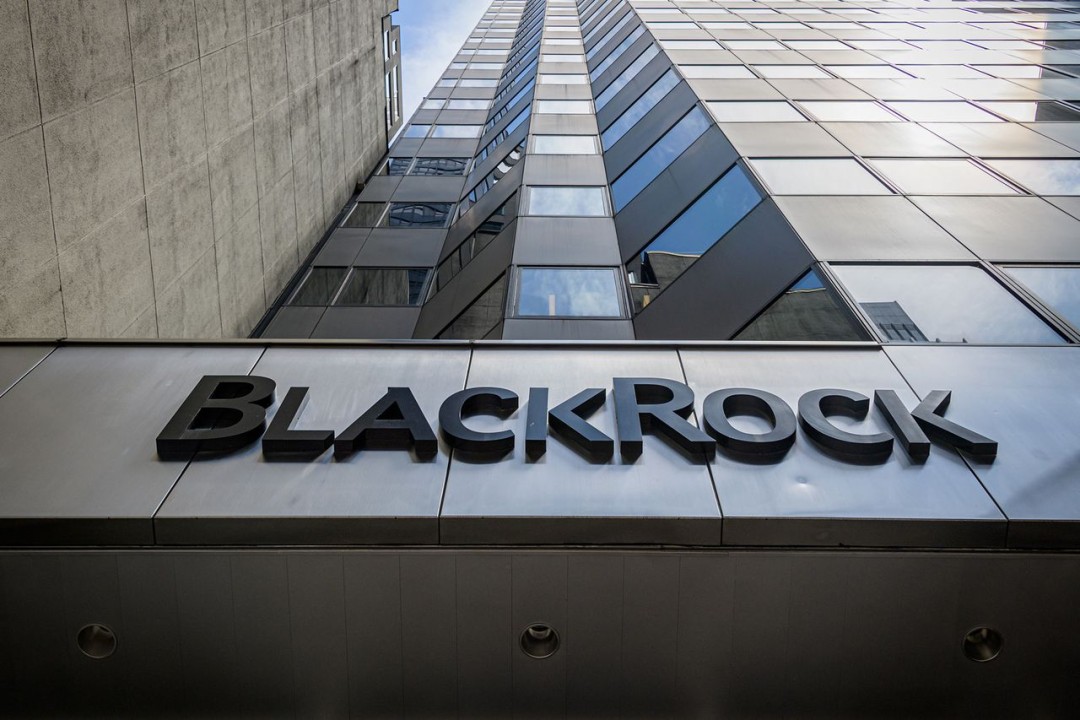
In a move defying market jitters, BlackRock’s iShares Bitcoin ETF (IBIT) surprised investors by accumulating a record-breaking 12,600 Bitcoin (BTC) on Tuesday, March 5th, 2024. This aggressive buying spree took place even as the broader cryptocurrency market experienced a significant downturn, with Bitcoin itself experiencing a volatile swing that saw it reach a new all-time high of $69,000 before plummeting over 10% within minutes.
The substantial inflow of $778 million into IBIT signifies a strong vote of confidence in Bitcoin from BlackRock, the world’s largest asset manager. This confidence comes despite the “carnage,” as some analysts have termed it, that unfolded in the crypto market on Tuesday. IBIT’s record purchase surpasses its previous daily highs of around 10,000 BTC, showcasing a potentially bullish long-term strategy by BlackRock.
“This is a significant development,” said Maya Sung, a crypto analyst at Fundstrat Global Advisors. “It demonstrates that institutional investors like BlackRock are viewing these market dips as opportunities to accumulate Bitcoin at potentially discounted prices. This buy-the-dip mentality could help stabilize the market and prevent further downward spirals.”
IBIT’s total assets under management (AUM) now hover around $12 billion, solidifying its position as the leading Bitcoin ETF. This figure puts it ahead of competitors like Fidelity’s FBTC, which currently holds around $7.2 billion in AUM. The strong inflows into IBIT also suggest that investor interest in Bitcoin ETFs remains high, even amidst short-term market fluctuations.
“The fact that IBIT continues to attract significant capital despite the volatility is a testament to the growing acceptance of Bitcoin as a legitimate asset class,” commented Jason Deane, an analyst at Valkyrie Investments. “BlackRock’s actions send a powerful message to the market that institutional investors are here to stay in the crypto space.”
The record purchase by IBIT also has implications for the overall health of the Bitcoin market. With BlackRock, a heavyweight in the traditional financial world, actively accumulating Bitcoin, it could potentially attract further institutional investment. This could lead to increased liquidity and potentially more stable price movements for the world’s leading cryptocurrency.
However, some analysts remain cautious, highlighting the inherent volatility of the crypto market. “While BlackRock’s move is positive, it’s important to remember that the crypto market is still in its nascent stages,” cautioned Michael Lee, a partner at Framework Ventures. “Investors should be prepared for continued price swings and exercise due diligence before entering the space.”
Overall, BlackRock’s record-breaking Bitcoin purchase through IBIT signifies a significant development in the cryptocurrency market. It highlights the growing institutional interest in Bitcoin and could potentially pave the way for further mainstream adoption. However, investors are advised to approach the market with caution and conduct thorough research before making any investment decisions.
Bitcoin Bounces Back: On-Chain Data Hints at Bullish Future for BTC
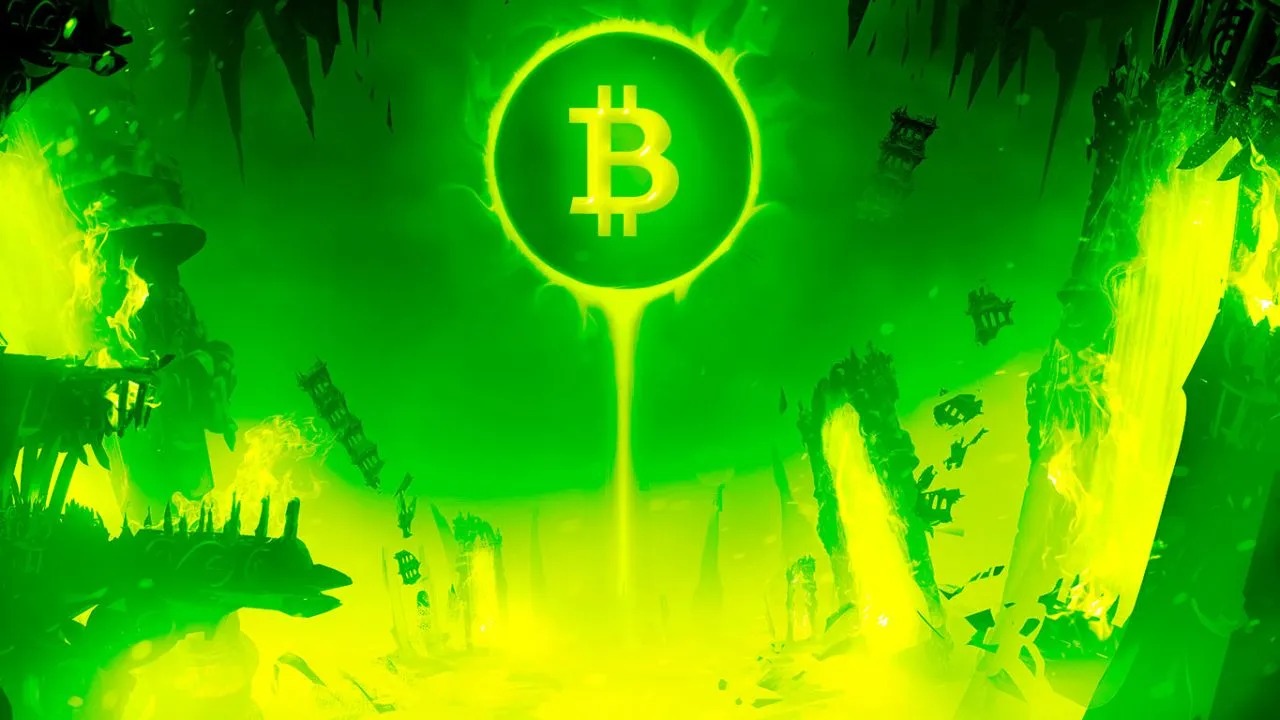
After a week of jitters, Bitcoin (BTC) is back on the upswing, defying gravity and testing resistance at the $43,000 mark. This bullish surge comes amidst whispers of a potential rally, fueled by positive signals emanating from the ever-illuminating realm of on-chain metrics. But will these whispers turn into roars, or is this just another fleeting blip in Bitcoin’s volatile journey?
One key metric painting a rosy picture is the decline in whale profit-taking. These large-scale Bitcoin holders, often dubbed “whales” due to their significant market impact, have been cashing out at a slower pace. This suggests they may be anticipating future price appreciation and are holding onto their precious BTC instead of selling. Additionally, the number of new entities entering the Bitcoin network is on the rise, indicating growing adoption and potential buying pressure.
Another bullish indicator is the MVRV ratio, which compares the market value of Bitcoin to its realized value (the price at which it was last bought). When the MVRV ratio is low, it suggests that Bitcoin is undervalued and ripe for a potential upswing. Currently, the MVRV ratio is hovering around negative 7.18%, signaling a potentially oversold market and hinting at an imminent price correction upwards.
Furthermore, institutional interest in Bitcoin seems to be rekindled. The recent launch of two new Bitcoin ETFs in the US, BlackRock’s iShares Bitcoin ETF and ProShares Bitcoin Strategy ETF, has already surpassed the daily trading volume of the established Grayscale Bitcoin Trust (GBTC). This increased institutional exposure could provide much-needed stability and legitimacy to the Bitcoin market, attracting fresh capital and pushing prices higher.
However, amidst the optimistic whispers, cautionary voices chime in. The cryptocurrency market remains notoriously volatile, and past performance is no guarantee of future results. On-chain metrics, while valuable, are not foolproof predictors, and external factors like geopolitical tensions or regulatory changes can still trigger unforeseen market swings.
So, will Bitcoin’s current momentum translate into a full-blown rally? Only time will tell. But one thing is certain: the whispers of bullish on-chain data have piqued the interest of investors and ignited the flames of hope for a brighter Bitcoin future. However, as with any investment, approaching Bitcoin with a healthy dose of skepticism and thorough research is paramount. Remember, the crypto market is a rollercoaster, and only the most prepared riders survive the twists and turns.
The Looming Specter: US Digital Dollar vs. Private Cryptocurrencies – A Clash of Titans or Symbiotic Dance?
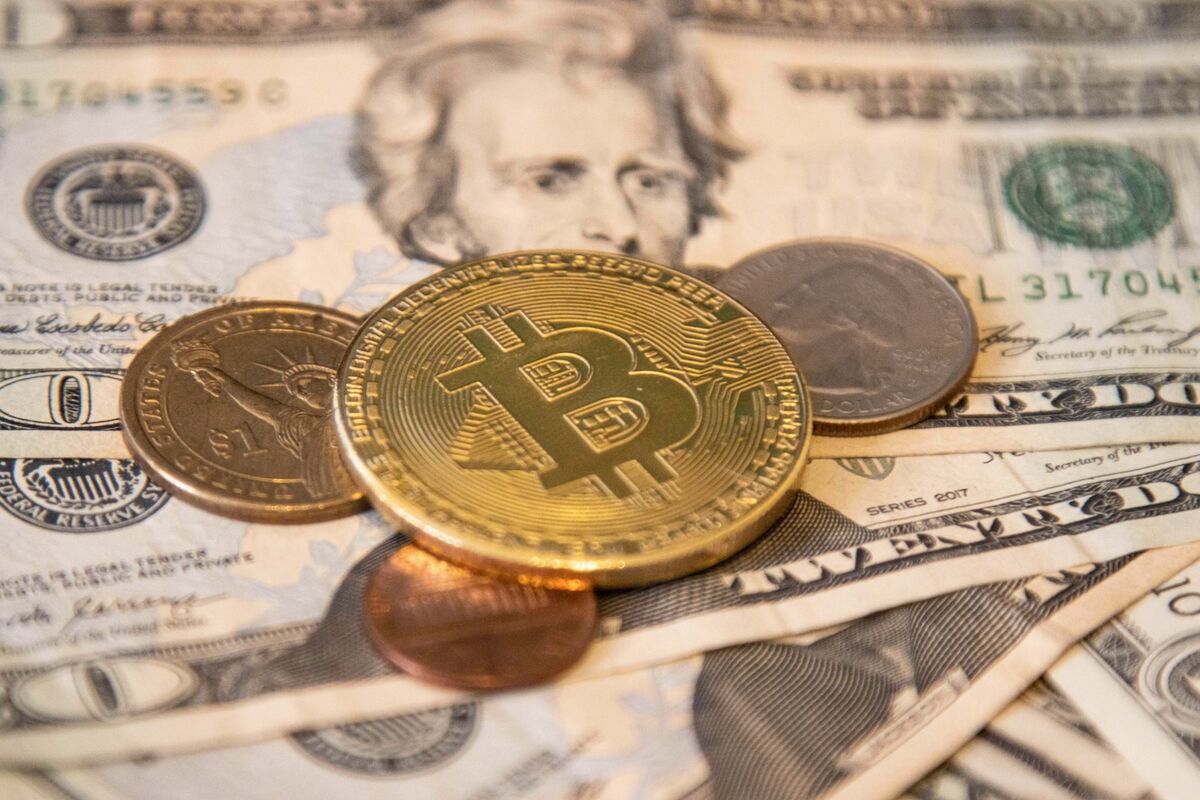
The financial landscape is about to face a seismic shift, as the US Treasury Department officially throws its hat into the digital currency ring. The potential launch of a US-backed digital dollar, dubbed “Fedcoin” by some, has sent shockwaves through the established financial system and the burgeoning world of private cryptocurrencies. While the implications are still being debated, one question hangs heavy in the air: Will this spell doom for private cryptocurrencies, or usher in a new era of co-existence?
The Allure of the Digital Dollar:
Proponents of a central bank digital currency (CBDC) like the digital dollar highlight several potential benefits. Increased financial inclusion for the unbanked, faster and cheaper cross-border transactions, and enhanced monetary policy control are just a few of the advantages touted. Additionally, a government-backed digital currency could offer a layer of stability and security often lacking in the volatile world of private cryptocurrencies.
The Shadow of Regulation:
However, the specter of government regulation and control looms large over the private cryptocurrency space. Some fear that a robust digital dollar could effectively crowd out private alternatives, stifling innovation and competition. Concerns also abound about potential surveillance and data privacy issues, as governments could gain unprecedented access to citizens’ financial transactions.
Symbiotic Dance or Clash of Titans?
The future of the relationship between a digital dollar and private cryptocurrencies remains shrouded in uncertainty. Some envision a scenario where the two coexist and even complement each other. The digital dollar could provide a stable foundation for the financial system, while private cryptocurrencies continue to drive innovation and explore new use cases.
However, others warn of a more antagonistic path. A powerful digital dollar could marginalize private cryptocurrencies, making them niche assets used primarily for non-traditional purposes. This could ultimately stifle the growth and potential of the blockchain technology underpinning them.
The Road Ahead: A Balancing Act
Ultimately, the success or failure of a digital dollar and its impact on private cryptocurrencies will depend on the path chosen by policymakers and developers. Striking a balance between innovation, competition, and regulatory oversight will be critical. Finding ways to leverage the strengths of both government-backed and private digital currencies while mitigating their respective risks will be the key to navigating this uncharted territory.
One thing is certain: the launch of a digital dollar marks a turning point in the evolution of money. Whether it paves the way for a future dominated by central bank control or fuels an even more vibrant and diverse digital asset ecosystem remains to be seen. The next few years will be crucial in determining the outcome of this fascinating dance between titans.
It’s important to note that the development of a digital dollar is still in its early stages, and no concrete decisions have been made. However, the mere consideration of this move highlights the growing importance of digital currencies and the potential impact they could have on the financial landscape. As the debate unfolds, it’s essential to stay informed and engaged, as the choices made today will shape the future of money for generations to come.
SEC Stumbles in Crypto Case, Exposing Cracks in Regulatory Foundation

The Securities and Exchange Commission (SEC), the US authority tasked with safeguarding investors and maintaining market integrity, has stumbled in a recent crypto case, admitting to presenting inaccurate information. This misstep, while seemingly isolated, has ignited a firestorm of concern, casting doubt on the SEC’s understanding and oversight of the burgeoning crypto industry.
The case in question involved allegations against a crypto firm accused of offering unregistered securities. During legal proceedings, the SEC presented faulty data as evidence, prompting the judge to request a public explanation. This blunder not only tarnished the specific case but also raised broader questions about the SEC’s preparedness to navigate the complex and rapidly evolving world of crypto.
Critics pounced on the error, claiming it exposes a worrying lack of expertise within the SEC regarding crypto-specific regulations and technologies. They argue that this instance is symptomatic of a larger problem: the SEC’s current regulatory framework, designed for traditional financial markets, is ill-equipped to effectively grapple with the unique nuances of the crypto landscape.
“This error isn’t just a procedural hiccup,” declared Maya Patel, a prominent digital asset lawyer. “It’s emblematic of the SEC’s ongoing struggle to adapt to the reality of the crypto market. Their traditional tools and methodologies simply don’t translate well to this new frontier.”
Adding fuel to the fire are several recent high-profile incidents in the crypto space, like the FTX collapse, that have highlighted gaps in regulatory oversight. These events have created a narrative of a wild west atmosphere within the crypto industry, where bad actors can operate with impunity due to inadequate regulatory frameworks.
However, not everyone interprets the SEC’s error as a sign of impending regulatory doom. Some argue that it’s merely a bump in the road on a long and inevitable journey towards effective crypto oversight. They point to the SEC’s recent creation of a dedicated crypto unit and its ongoing efforts to engage with industry stakeholders as evidence of a genuine commitment to adapt and regulate the space responsibly.
“The SEC is working diligently to adjust its approach to crypto,” stated John Lee, a former SEC official now working in the private sector. “They’re acknowledging the challenges and actively seeking solutions. This error, while unfortunate, shouldn’t overshadow the progress that’s being made.”
Ultimately, the SEC’s stumble in this crypto case serves as a wake-up call, highlighting the need for a collaborative effort to strengthen regulatory frameworks without stifling innovation. The onus lies on both the SEC, to accelerate its learning curve and tailor its approach to the specificities of crypto, and industry players, to actively engage with regulators and promote transparency and responsible practices.
Whether the SEC’s misstep signifies a regulatory chasm too wide to bridge or a temporary stumble on the path towards effective crypto oversight remains to be seen. However, one thing is certain: the coming months and years will be crucial in determining the future of crypto regulation and the industry’s ability to operate with trust and transparency.
Dogecoin, Avalanche Jump Up to 12% as Crypto Market Rallies
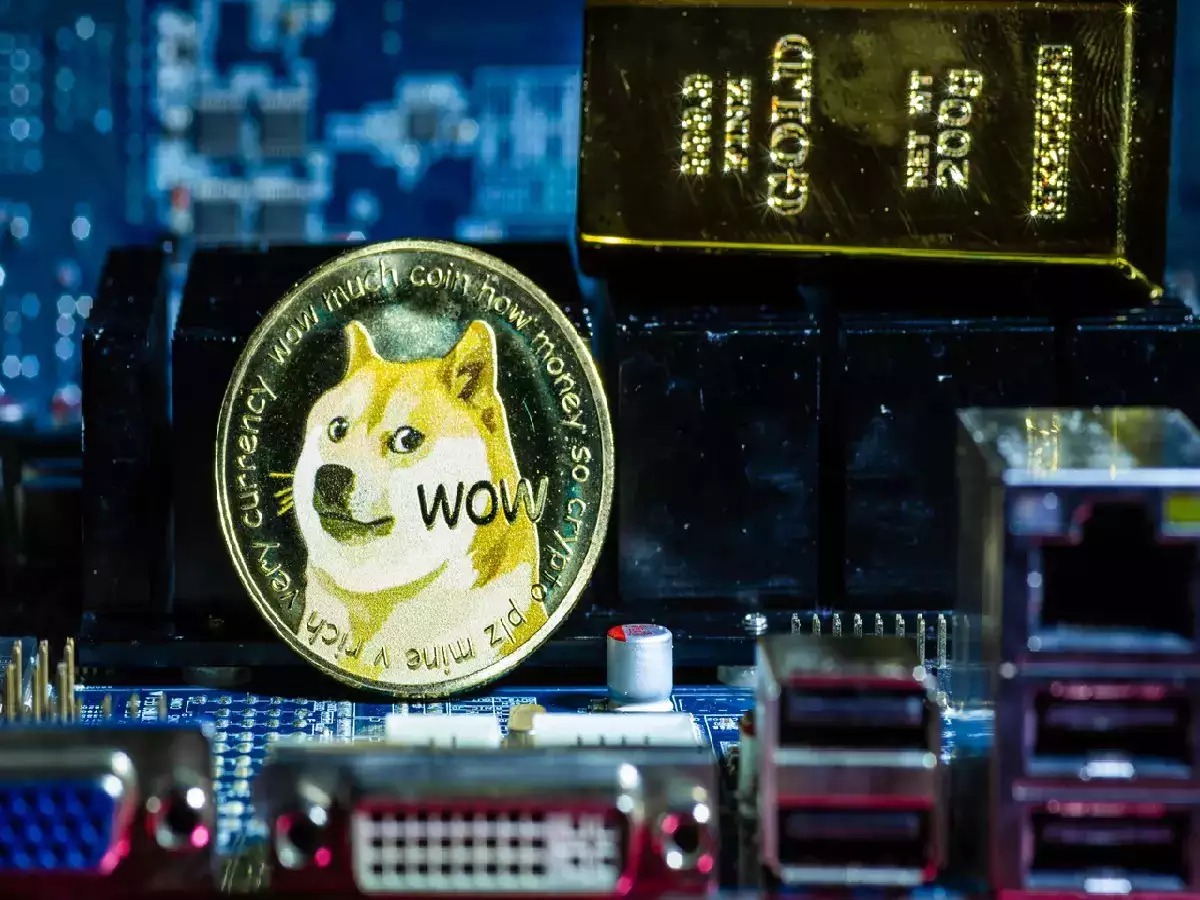
In a bullish wave sweeping across the cryptocurrency market, Dogecoin and Avalanche experienced remarkable gains, jumping by 12% and 10% respectively. This surge comes amidst a broader market rally that saw Bitcoin break through the $43,000 barrier, solidifying positive investor sentiment.
Dogecoin’s Rise: Meme Coin Mania Rekindled?
Dogecoin, the meme-based cryptocurrency often dismissed as a fad, has surprised many with its recent surge. This rise can be attributed to several factors:
- Elon Musk’s continued support: The Tesla CEO and billionaire remains a vocal advocate for Dogecoin, regularly tweeting about it and even suggesting its use for Twitter payments. This high-profile endorsement continues to fuel investor interest.
- Retail investor enthusiasm: Dogecoin has a loyal community of retail investors who believe in its potential and are actively driving its adoption. This community’s enthusiasm is evident on social media platforms like Twitter and Reddit, where Dogecoin discussions frequently trend.
- Increased listings on major exchanges: Dogecoin’s availability on more mainstream platforms like Robinhood and Kraken has made it easier for new investors to access and purchase, further fueling its growth.
Avalanche’s Ascent: Smart Contracts and Defi Power a Surge
While Dogecoin’s rise might seem fueled by hype, Avalanche’s growth is largely driven by its underlying technology and growing ecosystem. Here’s what’s driving its rally:
- Rapidly growing DeFi ecosystem: Avalanche has emerged as a leading platform for decentralized finance (DeFi) applications, attracting developers and users with its fast transaction speeds, low fees, and scalable network. This rising popularity within the DeFi space has significantly boosted its value.
- Institutional interest: As institutional investors seek exposure to DeFi, Avalanche has emerged as a platform of interest due to its robust infrastructure and potential for growth. This institutional support is further fueling its adoption and price rise.
- Technical developments: The Avalanche team continues to make significant advancements to the platform, including the recent launch of Avalanche Subnets, which enables the creation of custom blockchain networks for specific use cases. These ongoing developments demonstrate the team’s commitment to innovation and further enhance the platform’s value proposition.
The Crypto Market Awakens: A Sustainable Bull Run or a Passing Trend?
While the current market rally is encouraging, it’s crucial to analyze whether this is the start of a sustained bull run or a temporary surge. Several factors suggest potential for continued growth:
- Increased institutional adoption: Major institutions are increasingly allocating funds to cryptocurrencies, which could significantly boost demand and drive long-term price appreciation.
- Growing awareness and interest: Cryptocurrencies are becoming increasingly mainstream, with mainstream media and financial institutions discussing them more frequently. This increased awareness is attracting new investors and driving market growth.
- Technological advancements: The underlying technology of blockchains and cryptocurrencies continues to evolve and become more robust, making the space more attractive to investors.
However, it’s essential to remember that the cryptocurrency market is still volatile, and unforeseen events can lead to sudden price reversals. Investors should approach the market cautiously, conduct thorough research, and have a long-term investment horizon.
Overall, the recent surge in Dogecoin and Avalanche is a positive sign for the cryptocurrency market. While the future remains uncertain, the current trends suggest potential for further growth and exciting developments in the crypto space.
Bitcoin Sender Hit with Record $3.1 Million Transaction Fee in Costly Mistake

In what can only be described as an epic fail, a Bitcoin sender has been hit with a record-breaking $3.1 million transaction fee. The astronomical fee, which far exceeds the value of the actual transaction, is believed to be the result of a simple error on the sender’s part. This incident highlights the importance of exercising due diligence when handling cryptocurrency transactions and the potentially costly consequences of carelessness.
The incident occurred on November 22, 2023, when the sender attempted to transfer 139.42 BTC (Bitcoin), worth approximately $5.1 million at today’s prices. However, due to an unspecified error, the sender mistakenly set the transaction fee to a staggering 85.2163 BTC, leaving them with a mere 55.77 BTC (approximately $2 million) on the recipient’s end.
This colossal blunder has sent shockwaves through the cryptocurrency community, acting as a stark reminder of the critical need for unwavering attention to detail when dealing with large sums of digital assets. The exorbitant fee has also raised serious concerns about the potential for human error to lead to significant financial losses in the cryptocurrency space.
The incident has triggered a debate about the design and implementation of transaction fees within the Bitcoin protocol. Some argue that the current system, which allows users to set their own fees, opens the door for human error and potential exploitation. Others maintain that the ability to set custom fees is an essential aspect of Bitcoin’s decentralized nature, enabling users to prioritize transaction speed and network congestion.
Regardless of the underlying cause, this incident serves as a cautionary tale for cryptocurrency users. It is paramount to carefully review transaction details before initiating any transfers, particularly when dealing with substantial amounts of money. Double-checking the recipient address, transaction amount, and fee is crucial to prevent costly mistakes.
This blunder also underscores the necessity for ongoing education and awareness campaigns within the cryptocurrency community. Users should be well-versed in transaction protocols, fee structures, and potential error points to minimize the risk of financial losses.
As the cryptocurrency landscape continues to evolve, it is imperative to strike a balance between user convenience and security. Implementing user-friendly interfaces, providing clear transaction information, and incorporating error prevention mechanisms can help reduce the likelihood of costly mistakes.
The $3.1 million transaction fee fiasco serves as a stark reminder of the importance of vigilance and education in the cryptocurrency realm. By exercising caution, double-checking transaction details, and staying informed about protocol updates, users can safeguard their digital assets and minimize the risk of financial losses.
The cryptocurrency landscape is still in its early stages of development, and incidents like this are bound to happen. It is important for users to learn from these mistakes and take steps to protect themselves from financial losses.
Bitcoin And Crypto Benefit From Bullish Sentiment In Equities Market
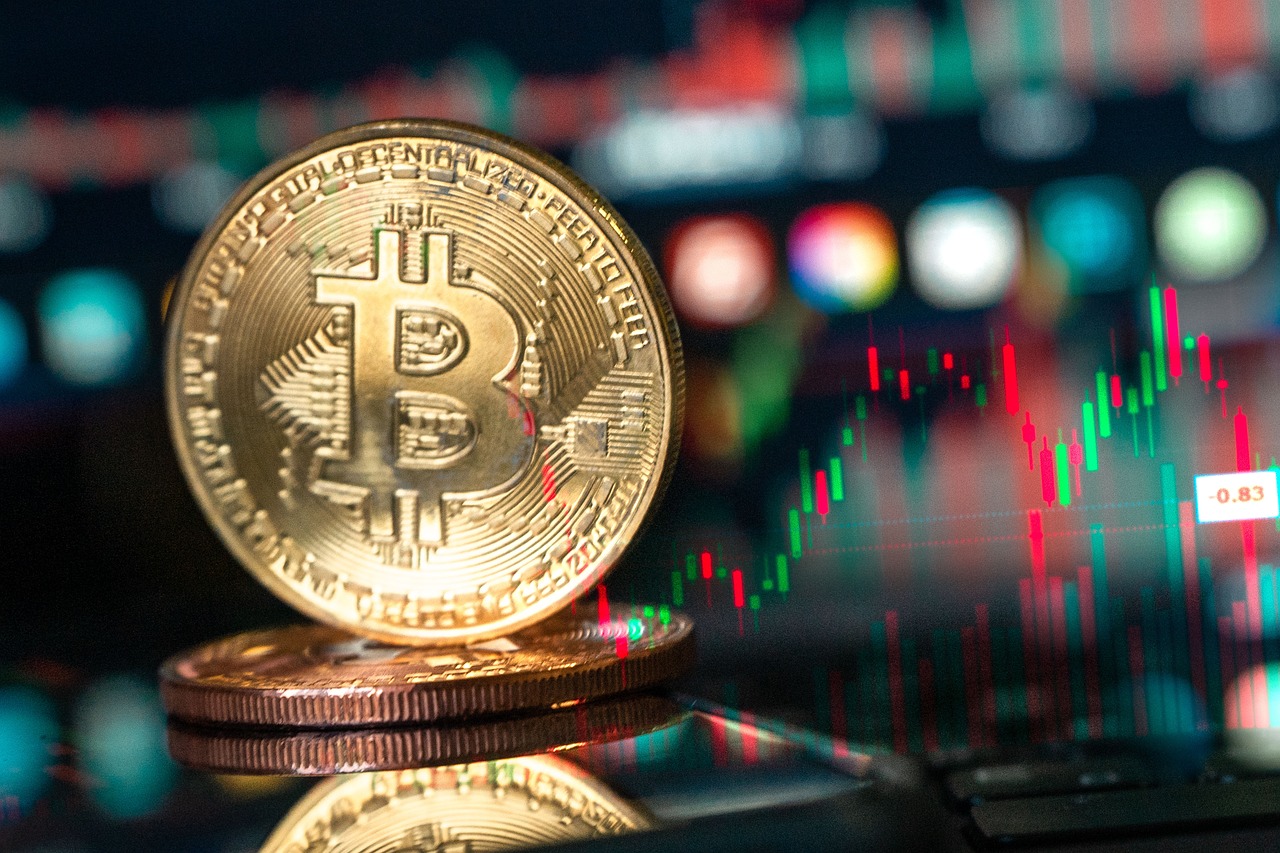
The bond and equity markets are sending positive signals to the crypto bulls, which will help them extend their gains during the first half of this year.
Many observers predicted a price decline following the macroeconomic factors which plagued the scene 2022.
The Fed has signaled a pause in the rate increases and inflation is slowing down.
Both markets are recovering from the turmoil that occurred in 2022. The market leader Bitcoin (), which lost more than 55% of its worth last year, has gained over 80% in value this year due to institutional money flowing into the market.
Tech stocks are on a tear in recent weeks, despite a bad start to the year because of interest rate hikes. The Nasdaq, which is heavily tech-oriented reached a 52-week-high on July 12.
The Artificial Intelligence (AI), craze, has fueled the bullish market sentiment. Seven stocks, including Google, Amazon Nvidia, and Apple, make up 55% of the NASDAQ 100, and 27% of S&P 500.
Market analyst Lyn Alden said that the liquidity of the bond market would have a positive effect on crypto and other assets that are liquidity-driven.
But then, at the beginning of Q4 2020, some things started to change. The dollar index fell as the U.S. Treasury started dumping liquidity into the market to offset the Fed’s quantitative tightening. The S&P 500 reached a bottom, and started to stabilize. Liquidity in the sovereign bond market began to ease. Bitcoin and other assets that are based on liquidity have risen.
Bullish market paused by interest rates
Since the Feds stopped the interest rate hikes after the previous consecutive increases, bulls have been in frenzy.
Bitcoin’s price has gained momentum due to increased liquidity and renewed interest from institutions in the asset. Increases in interest rates slow down market growth, as investors move their funds away from risky assets.
Experts have predicted that the price of Bitcoin will rise as the US market is about to launch a Bitcoin Exchange Traded Fund.
Recent events, such as Ripple (XRP)’s partial lawsuit against the Securities and Exchange Commission have fueled a bullish mood.
XRP’s price has maintained a 7-day increase of more than 58.92%, while altcoins such as Cardano (ADA), Solana(SOL), or Dogecoin(DOGE) recorded a 6.17% rise, 16.63% and 6.40%, respectively.
